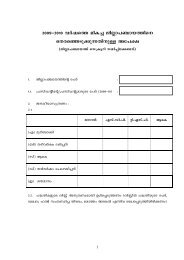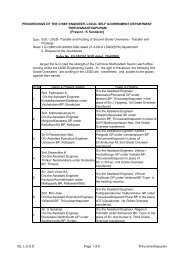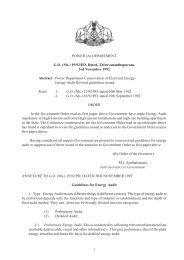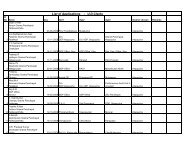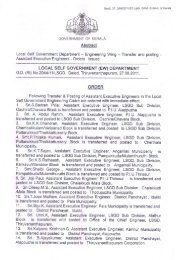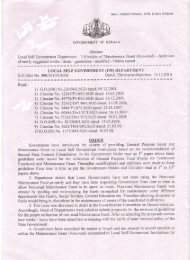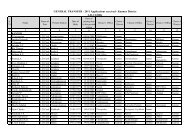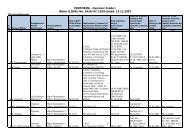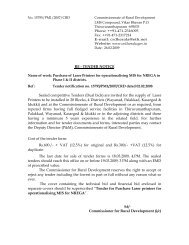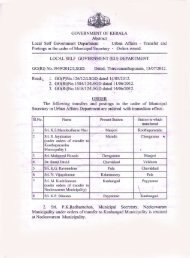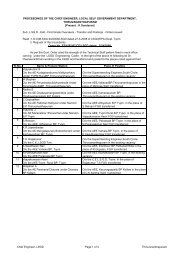Chapter 2 - Kerala Govt Logo
Chapter 2 - Kerala Govt Logo
Chapter 2 - Kerala Govt Logo
- No tags were found...
You also want an ePaper? Increase the reach of your titles
YUMPU automatically turns print PDFs into web optimized ePapers that Google loves.
<strong>Chapter</strong> 2Policy, Legislation and RegulationFunding options are laid out including direct central and state support including throughexisting schemes, public-private partnerships, and external funding agencies. It directs that atleast 20% of the funds should be earmarked towards servicing the urban poor. The Centre alsoplans to institute awards to the best performing cities, reminiscent of the Nirmal GramPuraskar awards for villages.The Millennium Development Goals (MDGs) enjoin upon the signatory nations to extend accessto improved sanitation to at least half the urban population by 2015, and 100% access by 2025.This implies extending coverage to households without improved sanitation, and providingproper sanitation facilities in public places to make cities open-defecation free.Overall, the policy focus on promoting newer technology initiatives will have a positive impact.Other policy suggestions on benchmarking, preparation of City sanitation plans and concepts ofgrading of urban areas are also expected to give an impetus to improving sanitation conditionsin Urban areas.The implementation of action plans, evolved from the national policy, in <strong>Kerala</strong> poses variousconstraints and challenges, such as:High density of population and environmental vulnerabilityAttitudinal change required to be brought in for community managed common sanitationfacilities as envisaged in the national sanitation policy especially for slums and dense areasAquifer contamination and consequent threat for health and environmental safety calling forinnovative strategies and technologies, especially in <strong>Kerala</strong>’s long coastal belt with high densityof population and high water tableLand area constraints for safe disposal of wastes including human excreta Proper restructuring of networking of drainagesThe ESMF proposed will address the above constraints and challenges.2..2..2.. Accttss and Regullattiionss2.2.2.1. Water (Prevention and Control of Pollution) Act 1974The Water (Prevention and Control of Pollution) Act was introduced on 23rd March 1974 formaintaining and restoring the wholesomeness of water through the prevention and control ofwater pollution. The salient features of the Act are:Constitution of Central and State Pollution Control Boards (PCBs).Description on the powers of the State PCBs to advise the State government, plancomprehensive programmes, disseminate information, conduct investigations, research andtraining, establish or recognize laboratories, inspect installations, lay down standards,evolve methods for treatment, utilization and disposal of effluents, advise on locatingindustries and perform functions entrusted by Central PCB with respect to prevention,control or abatement of discharge of waste or effluent to streams, wells or land.Empowerment of Central Government to direct Central PCB and Central and StateGovernment to direct State PCBsEmpowerment of the State government to restrict the application to certain areasEmpowerment of the State PCB to obtain information on sewage or trade effluents or onestablishments producing or proposing to produce effluents based on stipulated procedures




